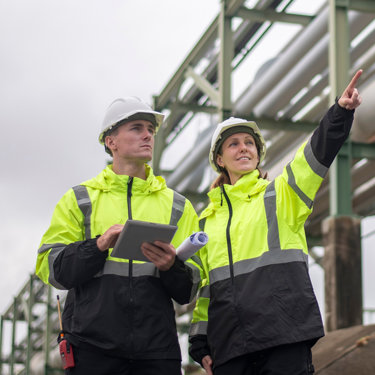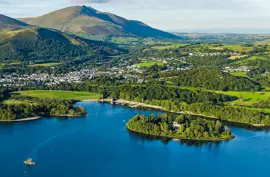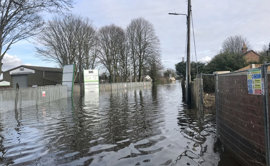The challenges of delivering Section 82 of the Environment Act
Published: 11 June 2024
Section 82 of the Environment Act 2021 hails a revolution in water quality monitoring, ushering in an era of real-time telemetry and fundamentally reshaping how we manage our precious water resources.
Currently, water quality monitoring is undertaken routinely and following an incident, but it requires boots on the ground and can’t be done in ‘real time’. To achieve the new legislation, water companies will need more permanent, technical solutions so they can monitor upstream and downstream in ‘real time’ at over 14,000 storm overflows and 9,000 sewage disposal works in England.
Access to the watercourse, planning permission to deploy technology into the river, the selection of mixing zones to monitor, the quality of measurement, vandalism, power, and ongoing maintenance are all challenges which need to be thought through before a solution is reached.

Water companies are required to start showing progress towards finding a solution from next year, and forward-thinking organisations are partnering with suppliers to run trials. However, this is a marathon, not a sprint, as total rollout is not required until 2035.
What is Section 82?
Section 82 of the Environment Act relates to monitoring the quality of water potentially affected by discharges from water company wastewater assets, such as storm overflows from the sewer network and sewage disposal treatment works.
Sewerage undertakers in England must continuously monitor the quality of water in watercourses upstream and downstream of an asset outfall for the following parameters:
- Levels of dissolved oxygen
- Temperature
- pH values
- Turbidity
- Levels of ammonia
Monitoring must be at least every 15 minutes at high-risk times and can be every hour at other times.
Data should be published in near real-time and include contextual information, such as event duration monitoring. Sewerage undertakers should focus on high-priority sites in the initial phase of installations, with total rollout to be complete by 2035.
Overcoming the challenges
Solving Section 82 has many challenges to overcome before water companies can be confident in their solution.
One of the greatest challenges in delivering Section 82 is land access. As most storm overflow sites are on private land, water companies will need to engage with landowners for permission to install instrumentation as well as ongoing maintenance and calibration visits. There are no statutory rights afforded to water companies in the Act. Therefore, building relationships with landowners will take time and incur additional costs.
Further to the requirement for land access, planning permission will also be required to deploy technology into the river.
Hydrological modelling of the watercourse is required before monitors are installed to help with understanding mixing zones as part of the site profile and to ensure correct positioning of the monitors.
Biofouling is the build-up of sediment, biofilms, or even barnacles on sondes due to algae, silt, and microorganisms from harsh aquatic environments. This is a year-round problem, but especially prevalent in summer months. This biofouling can skew data, making it near worthless. Regular field visits to clean equipment can be costly. It is estimated that maintenance costs due to biofouling can consume up to 50% of operational budgets.
Alternatively, technology such as central wiper systems and sapphire glass surfaces can provide anti-fouling in low-power applications without the need for an in-person site visit.
Ammonia monitoring is the primary issue with Section 82 legislation. Accuracy is hard to deliver consistently. Wet chemistry and colorimetric analysis are still the most common methods used for quantifying aqueous ammonia in the laboratory. However, as with any optical engine / spectrometry, it's great in controlled conditions in a laboratory, but when used in the field, there can be associated problems with fouling of the lenses and, in certain cases, turbidity may affect the light intensity. Find out more about solving the problems of ammonia monitoring here.
Sondes, battery packs, and solar panels are all expensive pieces of equipment and are at risk of vandalism or theft. Some locations will be on private land and easier to manage. Some will be publicly accessible and water companies and suppliers will need to think carefully about how to manage this risk.
Sondes left in the water will require a power source to ensure continuous monitoring. For the reliability in the stream of data, fixed kiosks would benefit from being mains-powered, with backup generator power where possible. Solar power could be an option to top up the battery and allow the unit to run for longer periods. The level of wattage of the solar panel will impact the ability to continuously power the unit, as well as cost and mobility.
Calibration is required prior to install as well as periodically to ensure the sonde is working effectively. Sondes can be pre-calibrated before they are installed, or on-site during installation. Sensor drift (when a sensor starts to become unreliable and needs recalibration) requires consideration regarding the length of time between recalibration visits.
Once sondes are installed, ongoing maintenance will be required periodically to ensure they continue to work effectively. Water companies will need to appoint suppliers who can deliver this service on a regular and continuous basis.
That is the question. Is the sonde the correct solution? The sonde has been used since 1993. And since then, many new products have been designed to measure more parameters, with greater accuracy. However, suppliers and water companies alike need to work together to understand if sondes are the answer to Section 82, or if an alternative solution will be more efficient and effective.
The traditional approach of boots-on-the-ground monitoring works for reactive monitoring. However, monitoring 23,000 sites nationally will surely require an alternative, fixed-site approach.
The bigger picture
To deliver a solution, water companies may need to think about the bigger picture. This is not just about installing monitors and walking away. There is the initial survey to identify the best location, overcoming access issues, installation, calibration, interpretation of data, and ongoing maintenance. It’s a full end-to-end capability requirement and partnership may well be the best way to tackle this, from the water companies' perspective. Water companies should look for a partner that can provide all these services in a turnkey solution to ensure compliance and allow them to focus their attention on their customers.
Sustainable water management
Adler & Allan has a plethora of experience monitoring water quality on routine and reactive projects for water companies and a number of aligned industries, including airports, utilities, and manufacturing. Complementing this is another group company, Detectronic, who provide precision intelligence across the wastewater network using market-leading monitoring products that are designed in-house
We are currently undertaking trials with Sheffield University and Xylem to find a robust and realistic solution to this problem. By embracing real-time telemetry and partnering with experienced solution providers, you can navigate the challenges, unlock the potential, and emerge as a leader in sustainable water management.
More from our Knowledge Hub
Environmental compliance today, creating a sustainable tomorrow
Helping you reduce risk to the environment and your operation by managing assets compliantly while achieving commercial, ESG, and net-zero goals.
Contact our experts




